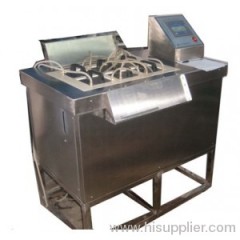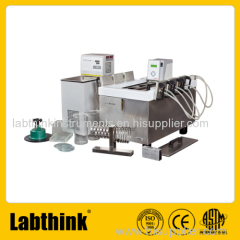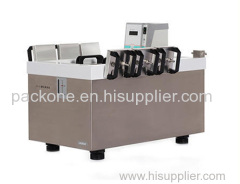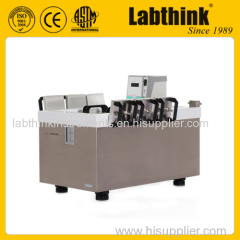
FOGGING TESTER
| Min. Order: | 1 Set/Sets |
|---|---|
| Trade Term: | FOB |
| Payment Terms: | T/T |
| Place of Origin: | Shandong |
Company Profile
| Location: | Jinan, Shandong, China (Mainland) |
|---|---|
| Business Type: | Manufacturer, Trading Company |
| Main Products: | Testing Machine For Tensile, Metal, Textile, Plastic, Paper |
Product Detail
| Model No.: | XHS-13 |
|---|---|
| Means of Transport: | Ocean, Air |
| Usage: | Plastic Testing Machine |
| Brand Name: | xh |
Product Description
Characteristics
Adopt 5.7 inches large touch screen display.
PLC Control , Data will be stored automatically while power-down , programmable control
PT100 high precision temperature sensor.
Hot chamber and cool chamber combined.
The unique temperature isolation design to ensure a stable temperature .
The whole machine is made of imported 316 stainless steel to adviod rusty.
The machine working surface face is made of imported synthetic mica ,ensure to have a isolation with the temperature , while ensure the surface temperature is not too high , promote the steady of the temperature control.
Cool chamber adopt imported low noise compressor .
Can perform 6 testes at the same time .
Temperature accuracy: ±0.3ºC.
Multiple protection: water protection, over temperature protection, leakage protection, over current protection, work instructions, etc .
Ensure no smell with an exhauster.
Testing Methods
1. Gloss Method: the specimen is heated
in the glass beaker; its evaporated constituents are condensed on the low
temperature glass plate. Through the comparison and calculation of the gloss
values before and after condensation, the fogging value of the specimen can be
obtained.
2. Fogging Method: the specimen is heated in the glass beaker; its evaporated constituents are condensed on the low temperature glass plate. Through the comparison and calculation of the fogging values before and after condensation, the fogging value of the specimen
can be obtained.
3. Weighing Method: the specimen is heated in the glass beaker; its evaporated constituents are condensed on the low temperature foil. Through calculating the changes of foil's weight before and after condensation, the weight of the condensed constituents can be
obtained.




